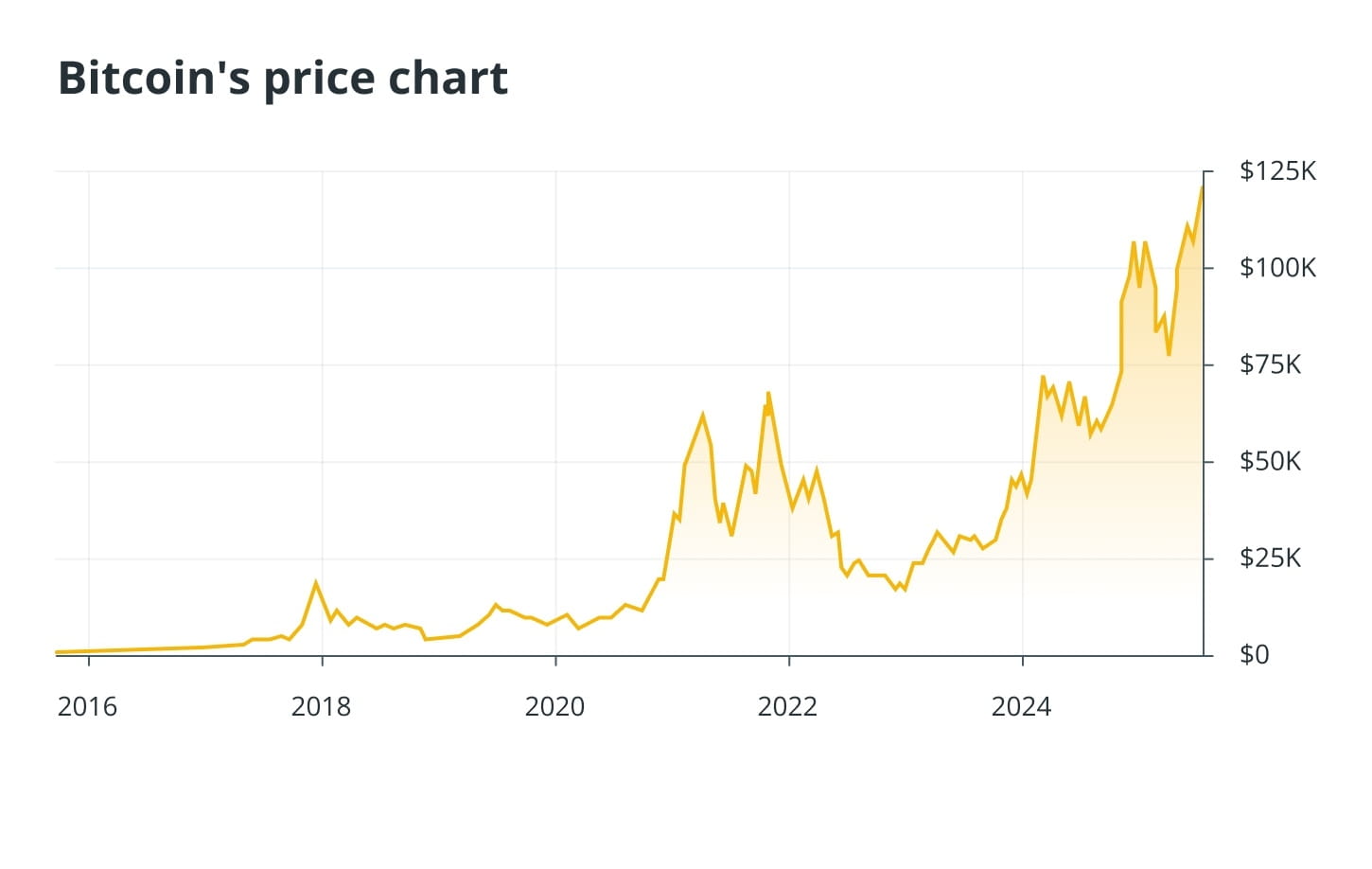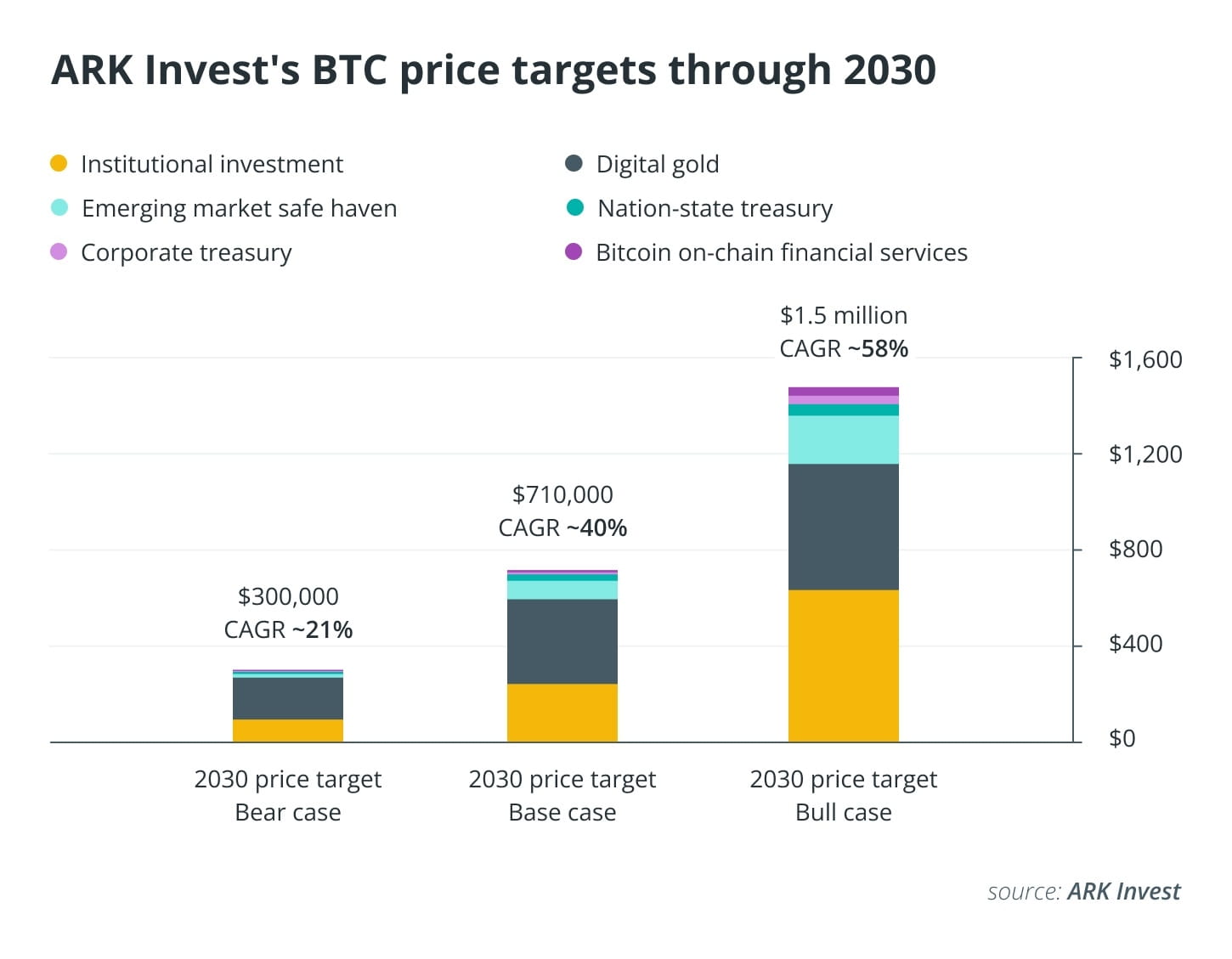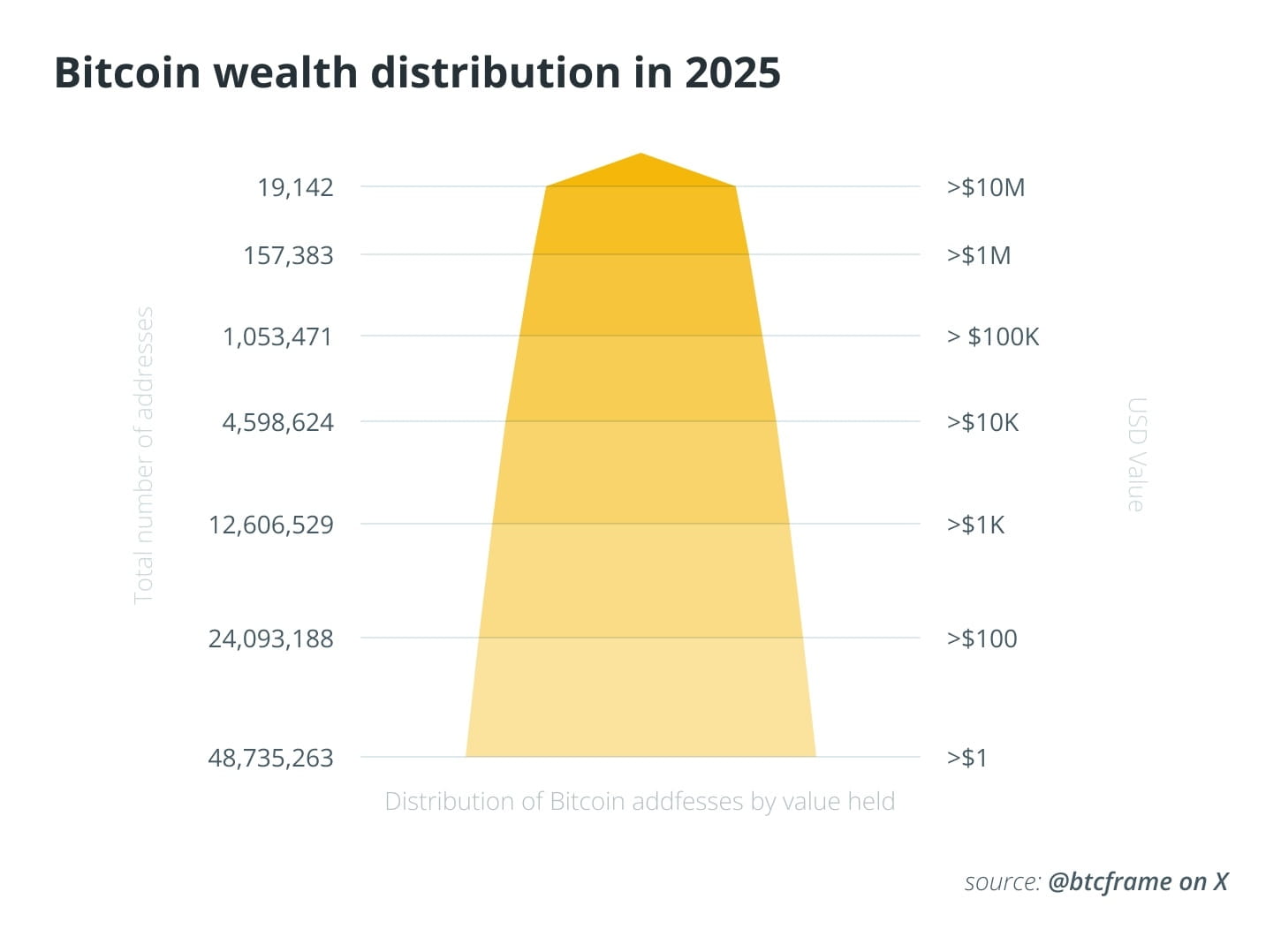Bitcoin has achieved incredible heights that few thought possible. The current factors driving its all-time highs remain unclear.
One of the main drivers is the emergence of spot Bitcoin ETFs at the beginning of 2024, such as BlackRock's iShares Bitcoin Trust ETF. By mid-2025, U.S. Bitcoin ETFs had accumulated $14.8 billion in net inflows, with BlackRock's ETF raising over $1.3 billion in just two days.
Moreover, the executive order of U.S. President Donald Trump to establish the Strategic Bitcoin Reserve Fund in March 2025, with a capital of approximately 200,000 Bitcoins, has sent a clear message of government support. This further reinforces Bitcoin's increasing position as a legitimate asset and helps bolster investor confidence.
Optimism around Bitcoin reached new heights during the "Crypto Week" in Washington, DC in July 2025, when Bitcoin surged to an all-time high of $123,166.

Is a Bitcoin Worth $1 Million Feasible?
So, is $1 million per Bitcoin a realistic goal? Several key factors suggest that this is entirely feasible, although achieving it will require a lot.
Limited Supply: The scarcity of Bitcoin is one of its most attractive features. With a capped supply of 21 million coins, the value of Bitcoin naturally increases as demand rises. The limited supply ensures that Bitcoin is not subject to inflation like fiat currencies, making it a potential store of value similar to gold.
Institutional Investment: The influx of capital from institutions is changing the dynamics of the Bitcoin market. As major financial institutions enter the market, the legitimacy of Bitcoin is reinforced, creating greater demand and driving prices higher.
Potential for cryptocurrency adoption: Approximately 6.8% of the global population currently owns cryptocurrency, equivalent to over 560 million people (with a compound annual growth rate of about 34%). There is still much room for growth.
FOMO: A 2025 survey by Security.org found that 67% of current cryptocurrency holders primarily invest in digital assets like Bitcoin with the expectation of making a profit. As Bitcoin prices continue to rise, more and more investors fear missing out on the opportunity.
Who Believes That Bitcoin Can Reach $1 Million?
Several prominent figures have predicted that Bitcoin could reach $1 million per coin, while highlighting the cryptocurrency's increasing potential.
Cathie Wood is a strong advocate for Bitcoin, predicting that the cryptocurrency could reach $1.5 million by 2030 under ARK Invest's "Bull Case" scenario.
Michael Saylor, the founder of Strategy, has repeatedly stated that the price of Bitcoin will reach $1 million when Wall Street holds 10% of its reserves in Bitcoin.
Robert Kiyosaki also shares this view, predicting that Bitcoin could reach $1 million by 2030. He sees Bitcoin as a hedge against inflation, similar to precious metals.

What Needs to Happen for Bitcoin to Reach $1 Million?
To achieve $1 million per Bitcoin, several factors need to occur in the market. Here is an analysis of the key factors:
More institutional investment
For Bitcoin to reach $1 million, its market capitalization would need to exceed $21 trillion - surpassing the value of gold.
Michael Saylor believes that if Wall Street allocates 10% of its reserves to Bitcoin, the market capitalization could reach $20 trillion, pushing the price of Bitcoin to $1 million.
However, institutional participation remains limited, with less than 5% of Bitcoin ETF assets held by long-term institutional investors. Retail investors currently dominate the Bitcoin ETF market.
Global Adoption
Achieving a price of $1 million per Bitcoin requires widespread global adoption, with experts estimating that 20% - 40% of the world's population (1.6 billion - 3.2 billion people) will need to adopt Bitcoin. This necessitates advancements in infrastructure, education, and regulatory support.
Continue Regulatory Support
Clear regulations and support are crucial for the development of Bitcoin. A unified approach would reduce uncertainty and promote investment. Efforts like the GENIUS Act and the 2025 Clarity Act have set clearer guidelines for digital assets, boosting institutional confidence and paving the way for broader adoption.
Continue Developing Technology
Continuing to develop solutions like the Lightning Network, which helps improve transaction speed and reduce fees, is essential for scaling Bitcoin, even as a store of value.
What Happens If Bitcoin Reaches $1 Million? The Million-Dollar Impact of BTC
If Bitcoin actually reaches $1 million, who will be the winners and losers? Hint: It sounds a bit like a pyramid scheme.
Winners: Early Adopters
If Bitcoin reaches $1 million, the total value held across the network will skyrocket. As of 2025, about 900,000 addresses hold at least 1 BTC, while around 4% of the global population owns a certain amount of Bitcoin. However, a majority of Bitcoin is controlled by a small group of wealthy individuals and organizations.

For example, Strategy would be a major beneficiary. If Bitcoin reaches $1 million, the current Bitcoin holdings that Strategy has would be worth over $600 billion.
Retail investors who initially bought Bitcoin at low prices ranging from $0.01 to $1 will see their profits multiply. Those who bought Bitcoin for a few cents could see their wealth grow into a multimillion-dollar asset.
Did you know? Satoshi Nakamoto, the founder of Bitcoin, is believed to hold approximately 1.1 million BTC, equivalent to about 5.2% of the total supply. With a price of 1 million dollars per Bitcoin, Satoshi's asset is estimated to be worth 1.1 trillion dollars.
Losers: Latecomers
When Bitcoin reaches $1 million, the gap between early investors and latecomers may widen, exacerbating global financial inequality.
Early market participants will benefit greatly, while new investors (especially individual investors) will face higher entry costs and lower profit potential. Latecomers may risk significant losses if Bitcoin prices adjust or crash after reaching a peak.
The growth of Bitcoin reflects a pyramid scheme model, where early participants benefit as new capital flows in from new buyers at higher prices. However, the dependency on continuous investment to drive growth makes the system vulnerable.
Unlike traditional investment forms, the value of Bitcoin is primarily driven by speculation and supply-demand dynamics, rather than the inherent utility of stocks or real estate. As prices rise, new investors are essentially funding the profits of early adopters.
If Bitcoin prices stagnate or decline, those who bought in at higher prices may incur significant losses.
Did you know? Governments could also be significantly harmed in a world dominated by Bitcoin. With the rise of decentralized cryptocurrencies, they may face decreased demand for fiat currency and loss of financial control.
Is the Potential for Bitcoin to Reach $1 Million Just Wishful Thinking?
Although the future of Bitcoin is promising, it still faces existing threats from emerging technologies, particularly quantum computing.
Quantum computers have the ability to undermine the cryptographic security of Bitcoin, primarily through Shor's algorithm. This could allow quantum computers to effectively analyze large integers and compute discrete logarithms (currently infeasible for classical computers), posing a direct threat to Bitcoin's encryption methods.
Bitcoin's reliance on elliptic curve cryptography makes it particularly vulnerable to quantum attacks. In fact, about 4 million BTC (approximately 25% of the available supply) are stored in addresses with exposed public keys, which are easily susceptible to quantum attacks.
The potential economic damage from a quantum attack on Bitcoin holdings in the future could be catastrophic; a successful attack on a widely used currency (with a market capitalization of $1 trillion as of July 21, 2025) could potentially trigger a global recession.
The decentralized nature of Bitcoin means there is no central authority that can quickly implement fixes or security measures, increasing the risk of widespread economic instability in the event of a quantum attack.
However, to protect Bitcoin from these risks, post-quantum cryptographic algorithms are being developed. The National Institute of Standards and Technology is working to standardize these algorithms to protect digital assets from quantum threats.
However, deploying these new algorithms will require a significant coordinated effort across the entire Bitcoin network. Transitioning to quantum-resistant cryptography could take time, with estimates suggesting the transition could cause the network to be down for up to 76 days.
Although it is just one of many concerns raised today, the quantum threat also raises some food for thought: Even if Bitcoin could reach the $1 million mark, would it actually be considered a sure bet?
